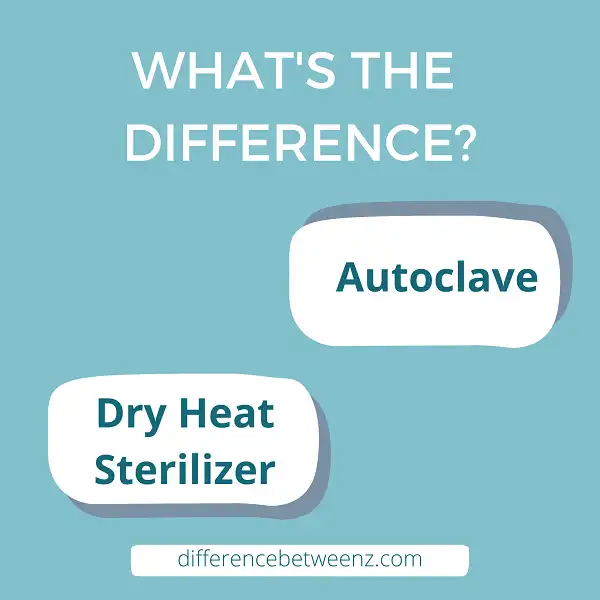Autoclaves and dry heat sterilizers are both used to sterilize equipment and supplies, but they use different methods. Autoclaves use pressurized steam to kill bacteria, while dry heat sterilizers use high temperatures to destroy microorganisms.
What is Autoclave?
- An autoclave is a chamber that uses steam under pressure to sterilize medical instruments and other equipment. The word autoclave comes from the Greek auto, meaning self, and clauein, meaning to close. Autoclaves were first used in the early 1800s to reduce the spread of infectious diseases.
- Early autoclaves were often large and bulky, and could only be operated by trained personnel. Today, autoclaves come in a variety of sizes and can be operated by anyone with basic training.
- They are an essential part of infection control in healthcare settings. Autoclaves work by using steam to kill bacteria, viruses, and fungi. The steam is generated by boiling water, and the pressure inside the autoclave keeps the water from boiling off too quickly. The combination of heat and pressure makes autoclaving an effective way to sterilize materials.
What is Dry Heat Sterilizer?
A dry heat sterilizer is a type of sterilization equipment that uses dry heat to sterilize tools, instruments, and other materials. The dry heat sterilizer works by circulating hot air around the materials to be sterilized. The temperature of the air is typically between 160 and 180 degrees Celsius. The exposure time can vary depending on the type of material being sterilized but is typically between 30 and 60 minutes. Dry heat sterilizers are often used in healthcare settings to sterilize surgical instruments and other materials that are sensitive to moisture.
Difference between Autoclave and Dry Heat Sterilizer
Autoclaves and dry heat sterilizers are both methods of sterilization, but they work in different ways. Autoclaves use steam to kill microorganisms, while dry heat sterilizers use high temperatures to achieve the same effect. Both methods are effective, but autoclaves are faster and easier to use. Dry heat sterilizers require longer exposure times to achieve Sterility, so they are not as practical for use in busy medical settings. In addition, autoclaves can be used to sterilize a wide variety of materials, while dry heat sterilizers can only be used on items that can withstand high temperatures without being damaged.
Conclusion
Autoclave and dry heat sterilizers are two of the most common methods for sterilizing medical equipment. Though both have their pros and cons, autoclaves are generally seen as the superior option. Autoclaving uses pressurized steam to kill bacteria, while dry heat sterilizers use high temperatures to achieve the same goal. Both methods have been proven effective at killing germs, but autoclaving is considered more reliable because it can penetrate deeper into objects and kill harder-to-kill spores.


